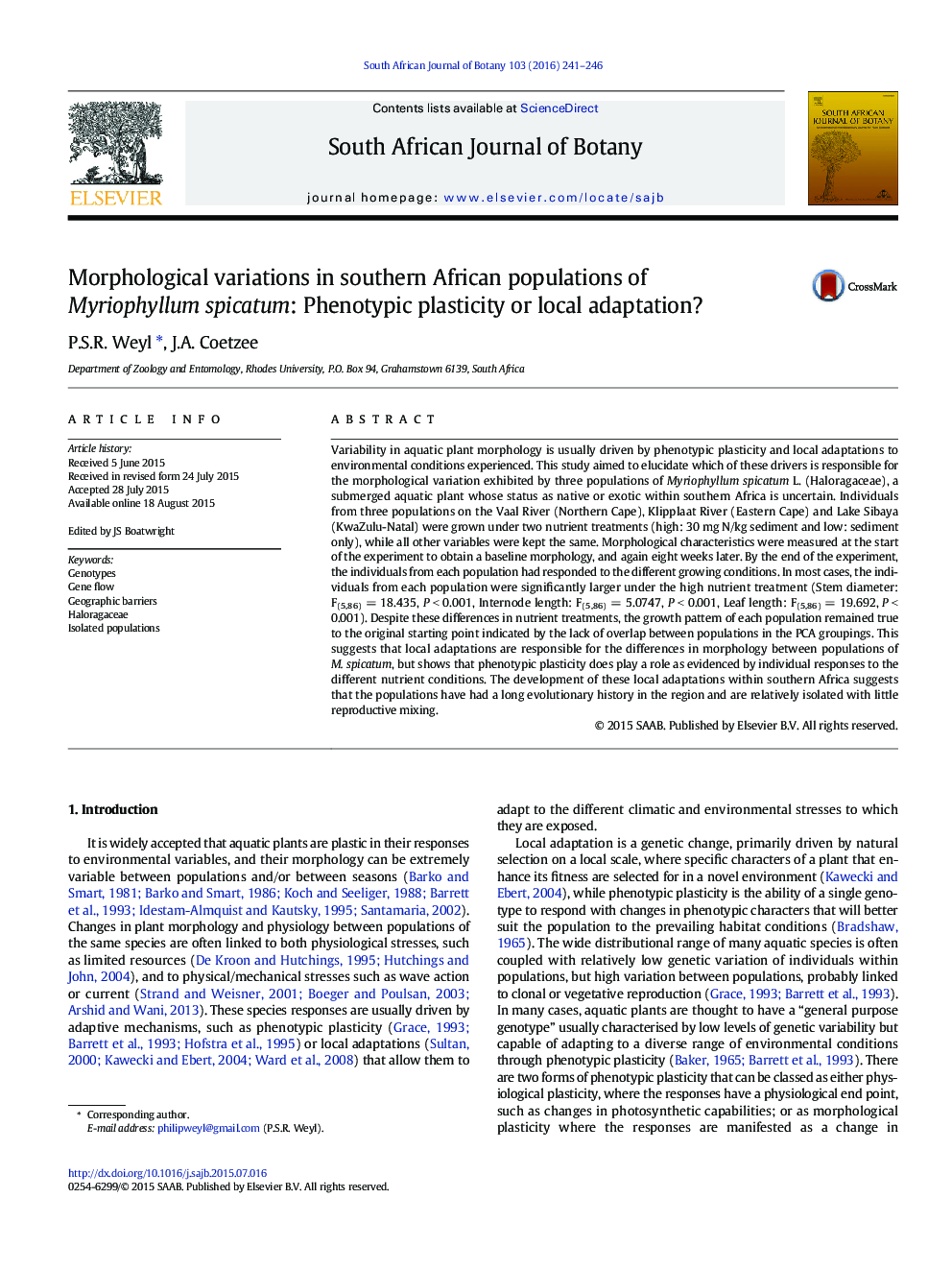| کد مقاله | کد نشریه | سال انتشار | مقاله انگلیسی | نسخه تمام متن |
|---|---|---|---|---|
| 4520289 | 1625155 | 2016 | 6 صفحه PDF | دانلود رایگان |
• Different morphologies of Myriophyllum spicatum are identified in southern Africa.
• We examine drivers of these morphological variations.
• Results suggest that local adaptations are more important than phenotypic plasticity.
• M. spicatum has a long evolutionary history within the region.
• Populations are isolated with little or no gene flow.
Variability in aquatic plant morphology is usually driven by phenotypic plasticity and local adaptations to environmental conditions experienced. This study aimed to elucidate which of these drivers is responsible for the morphological variation exhibited by three populations of Myriophyllum spicatum L. (Haloragaceae), a submerged aquatic plant whose status as native or exotic within southern Africa is uncertain. Individuals from three populations on the Vaal River (Northern Cape), Klipplaat River (Eastern Cape) and Lake Sibaya (KwaZulu-Natal) were grown under two nutrient treatments (high: 30 mg N/kg sediment and low: sediment only), while all other variables were kept the same. Morphological characteristics were measured at the start of the experiment to obtain a baseline morphology, and again eight weeks later. By the end of the experiment, the individuals from each population had responded to the different growing conditions. In most cases, the individuals from each population were significantly larger under the high nutrient treatment (Stem diameter: F(5,86) = 18.435, P < 0.001, Internode length: F(5,86) = 5.0747, P < 0.001, Leaf length: F(5,86) = 19.692, P < 0.001). Despite these differences in nutrient treatments, the growth pattern of each population remained true to the original starting point indicated by the lack of overlap between populations in the PCA groupings. This suggests that local adaptations are responsible for the differences in morphology between populations of M. spicatum, but shows that phenotypic plasticity does play a role as evidenced by individual responses to the different nutrient conditions. The development of these local adaptations within southern Africa suggests that the populations have had a long evolutionary history in the region and are relatively isolated with little reproductive mixing.
Journal: South African Journal of Botany - Volume 103, March 2016, Pages 241–246
